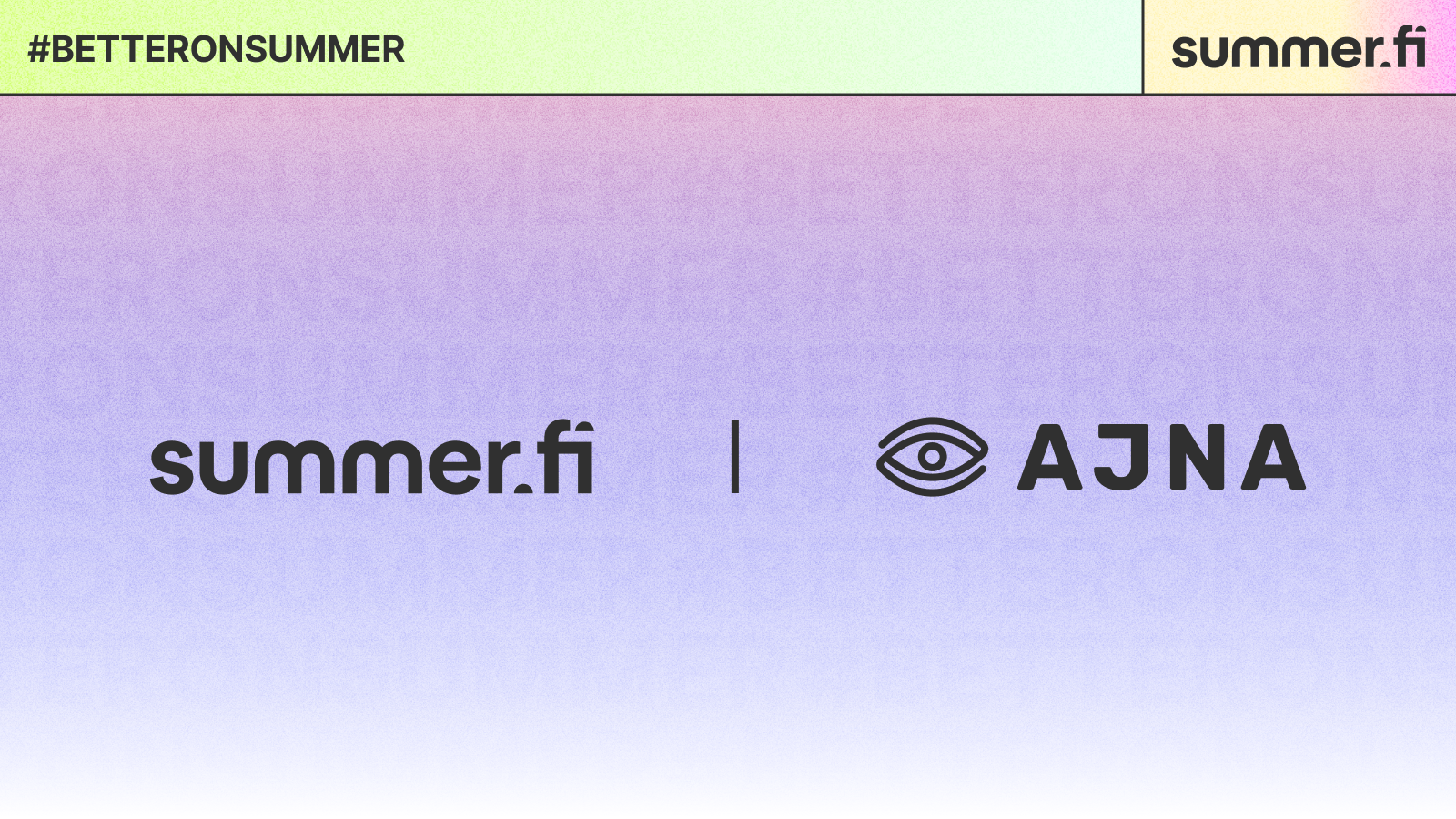What is AJNA and why should you care?

AJNA is a new borrow lend protocol that aims to become a highly scalable borrow/lend protocol that is fully immutable. It is a DeFi system that does things differently, aiming to make it easy and safe for people to lend and borrow all types of crypto assets. What sets it apart is that it doesn't rely on external tools or people to make decisions.
What does that mean?
No Oracle Magic: Unlike others, it doesn't need special tools to check prices, making it less risky.
Longtail Lending Made Easy: You can effortlessly lend or borrow ANY different digital assets.
Self-Adjusting Interest Rates: Instead of governance, it employs a dynamic system that adjusts interest rates based on the balance of deposits and loans, maintaining equilibrium.
Liquidation Bonds: To ensure fair liquidations, users must provide a bond when initiating a liquidation, reducing the risk of manipulation.
For a more comprehensive, but digestible overview you can read this tweet from founder Greg Di Prisco.
How does AJNA differ from other Borrow / Lend protocols?
The first question that might cross your mind is, why should I use AJNA instead of other borrow/lend protocols that I am more familiar with, such as AAVE, Compound, Spark, Maker, or Morpho?
AJNA, in many ways is a safer borrowing experience, this is because with AJNA you don’t have to worry about oracle risks, interest rates blowing out unexpectedly, or rash governance decisions that might impact your position.
Flexibility vs other protocols with Governance
Ajna Protocol's lack of governance provides greater flexibility than other platforms like Aave or MakerDAO. By eliminating governance, Ajna reduces the administrative overhead and potential political conflicts that can arise in decision-making processes. This approach allows for a more market-driven adjustment of parameters like interest rates, leading to potentially faster responses to market conditions, benefiting you as a borrower.
Interest Rate Risk
Ajna Protocol's utilization-based interest rate model, which adjusts rates based on supply and demand, offers a dynamic method to mitigate interest rate risks. This contrasts protocols with fixed governance-set rates, where interest rate adjustments might lag behind market changes, potentially leading to liquidity risks or uncompetitive rates. Additionally, rates can only change by 10% every 12 hours, preventing sudden spikes. This contrasts with Aave's model, where rates are closely tied to pool utilization and can vary more rapidly, leading to potentially higher volatility in borrowing costs.
Unlimited Options to Borrow and Earn
Ajna Protocol allows for a wide range of borrowing and lending options, including ERC-20 tokens and NFTs, without the limitations imposed by governance or whitelisting processes. This contrasts with platforms like Aave or Maker, where the range of borrowable assets is often limited by governance decisions. Ajna users have greater flexibility and choice to borrow against and earn on their assets.
Oracle Risk
Ajna's exclusion of oracles for price feeds inherently reduces the oracle risk, a vulnerability in many DeFi protocols like Aave that rely on external price oracles. By utilizing an internal order book for setting asset values, Ajna minimizes the risk of price manipulation and external point failures, enhancing the security and reliability of its lending and borrowing operations.
So, What are people doing in AJNA today and whats possible?
Today, AJNA supports many markets with the possibility of one-day having markets for any asset imaginable for borrowers and lenders.
But what can you actually do with your tokens on summer.fi using AJNA protocol?
A better borrowing experience on AJNA
As mentioned, borrowing on AJNA mitigates many of the risks of DeFi lending today.
As such, borrowing against assets and gaining liquidity is one way you can utilize the AJNA protocol on Summer.fi
Multiplying with more peace of mind
Since Multiplying is just a specific type of borrowing, made to increase exposure and amplify profits. It also benefits from the better borrowing properties of AJNA protocol on Summer.fi.
Earning Yield and Token Rewards on a wide range of assets
On the other hand, borrowers in AJNA are lenders, as they provide the liquidity for borrowers.
As such, users can earn yield and exclusive token rewards on Summer.fi for a broad range of assets.
Tips and Tricks to Get Started with AJNA
The Benefits
As a lender, you can earn exclusive rewards and earn competitive yields for doing so.
The Risks
There are several risks as a lender, but the main ones are around the management of your position:
- Giving up yield: If you fail to manage your lending position and the price of the asset you are providing liquidity against moves up too much, your position will stop earning yield and rewards, and you’ll have to manually re-adjust it.
- Trading for the collateral asset: If you fail to manage your lending position and the asset you are providing liquidity against moves down too much, your position will be sold for the collateral asset at the price you selected, leaving you holding the collateral asset.
- Temporary inability to withdraw: Your liquidity might not be available for withdrawal in all cases; while borrower liquidations occur, they typically last at least 6 hours, after which you can withdraw normally if successful.
Here are some tips for choosing the right price for you, for more in depth information you can check out the docs.
What you need to know as a Borrower
The Benefits
As a borrower, the benefits are mainly:
- The safety properties you receive from a market-driven approach to interest rates versus the fickle nature of governance.
- The peace of mind that your position will no longer have oracle risks, like flash crashes or oracle attacks.
- The ability to create a pool, and borrow against any type of asset you can imagine on ethereum.
The Risks
As with any borrow position, the main risks are related to your chosen Liquidation price and LTV Ratio and their impact on the management of your position.
Full video: https://www.youtube.com/watch?v=2WtWinp-9eA
Article and video by Jordan Jackson
Getting in touch
If you have any questions regarding Summer.fi, contact us at support@summer.fi or our social media.

